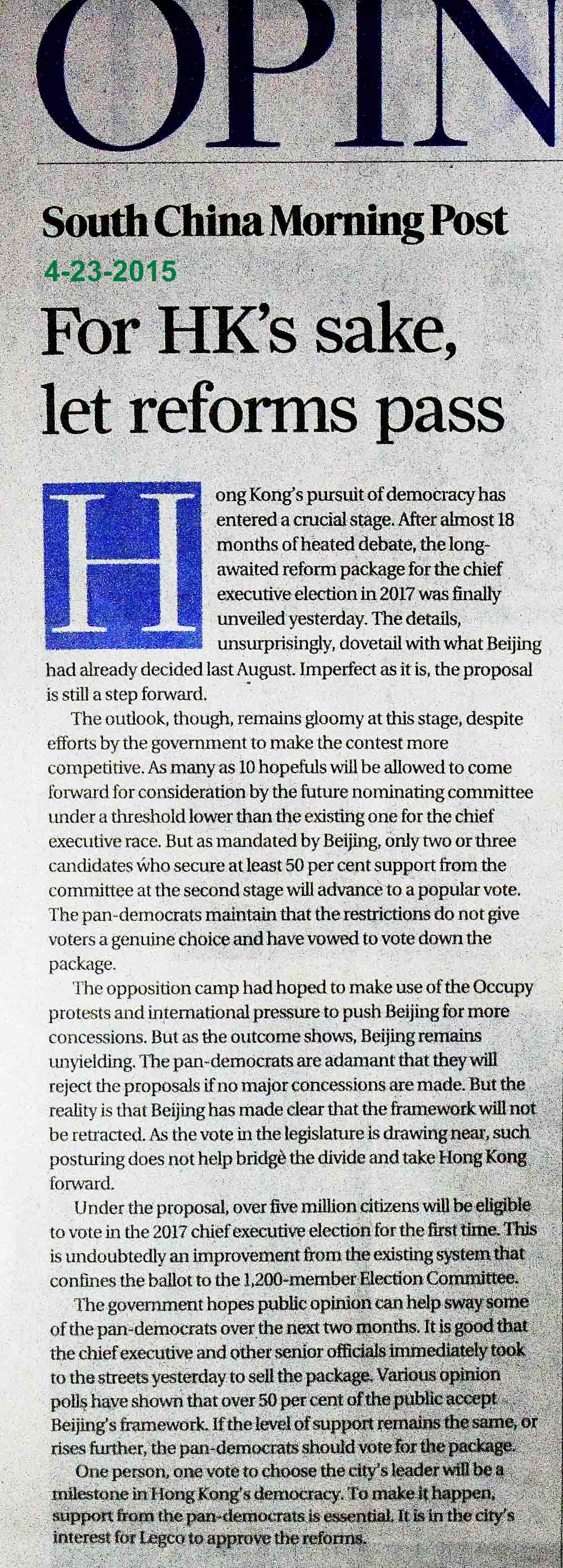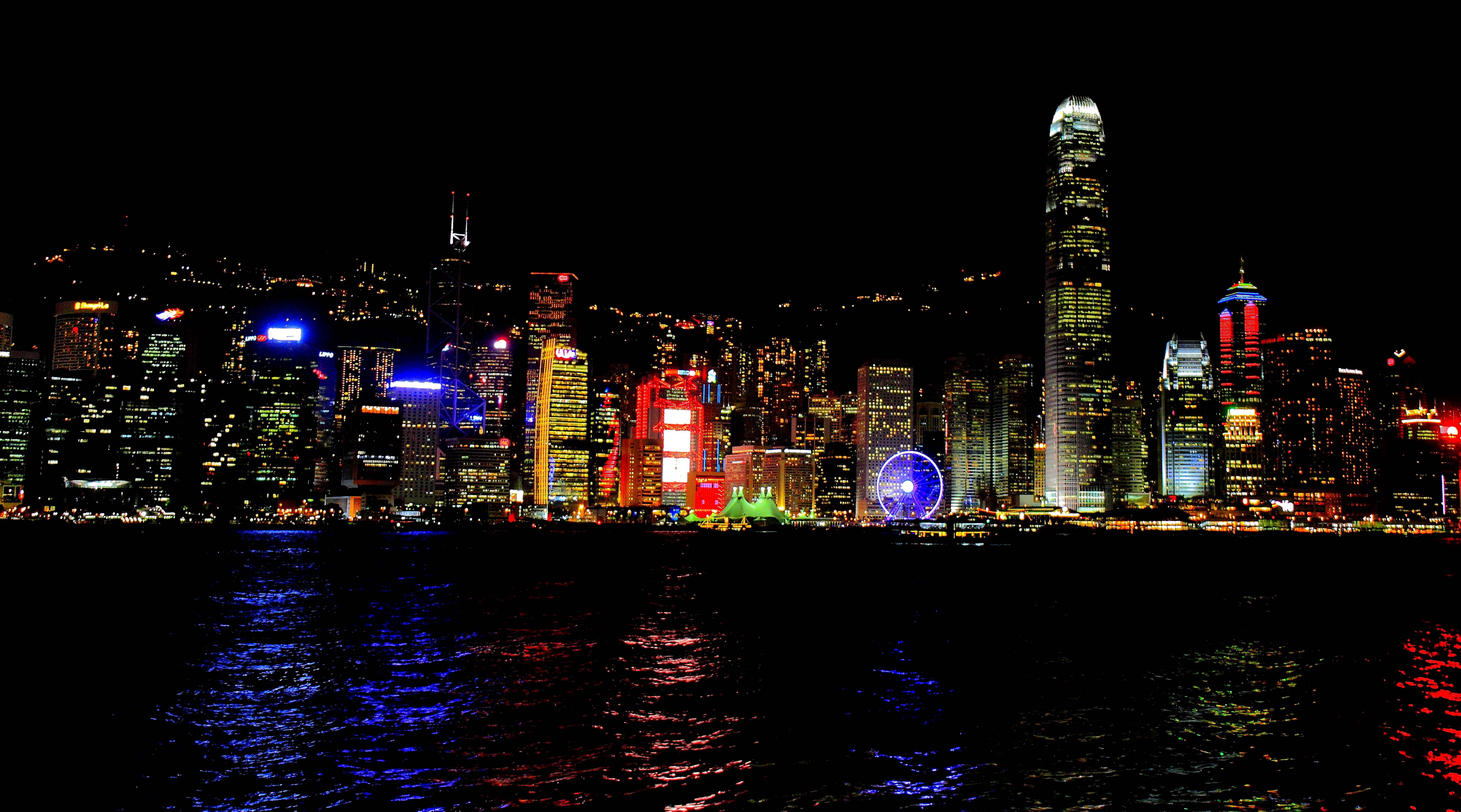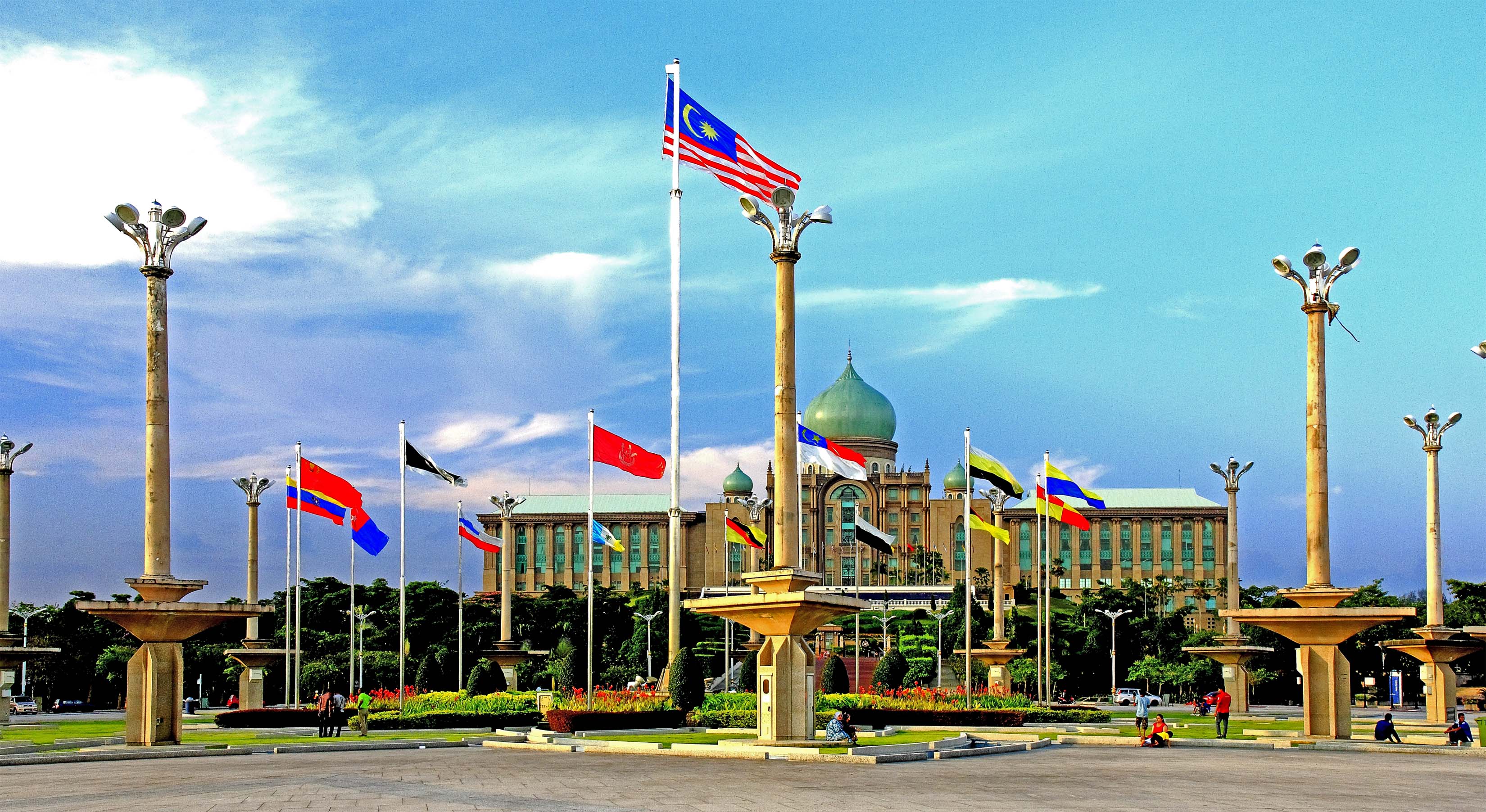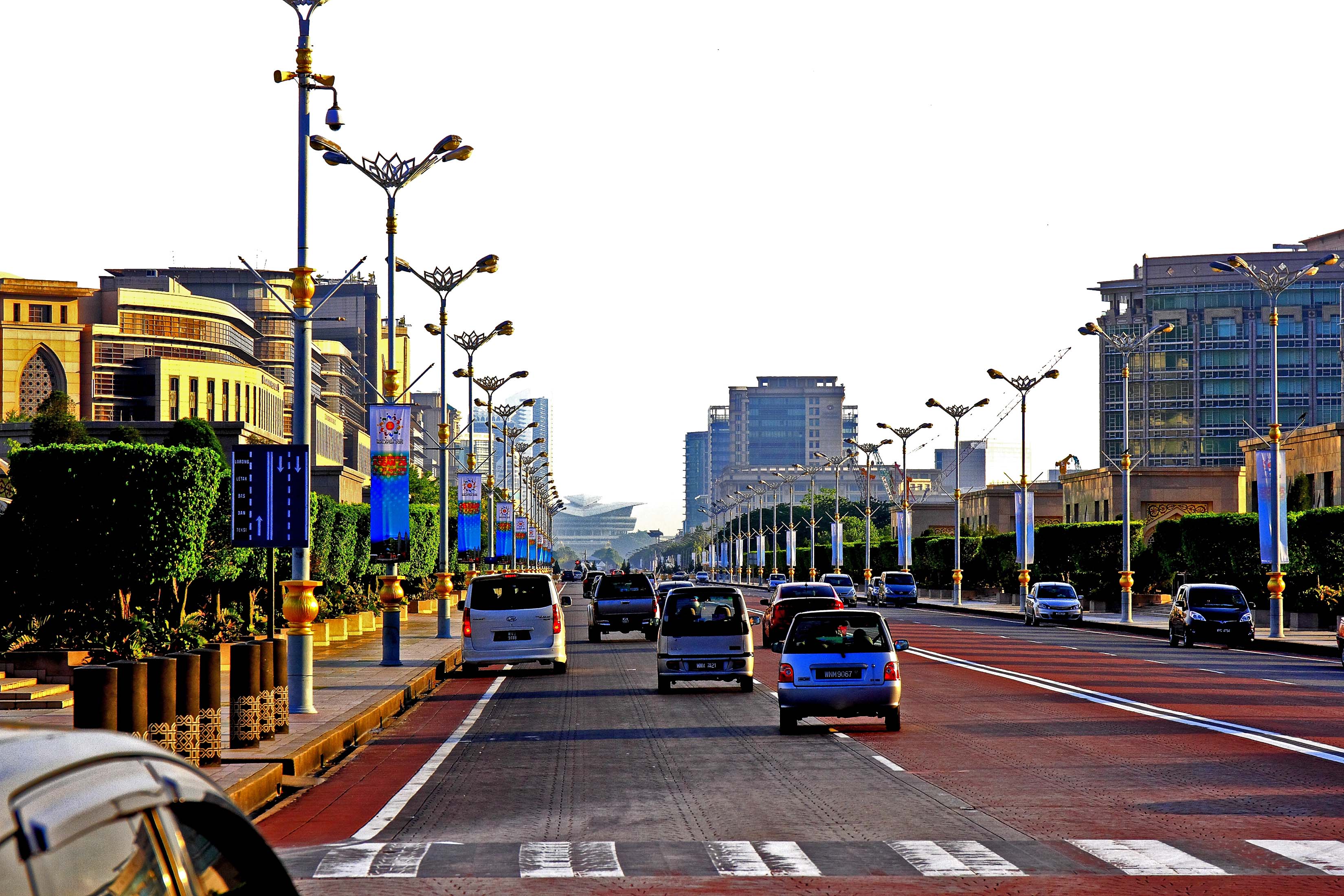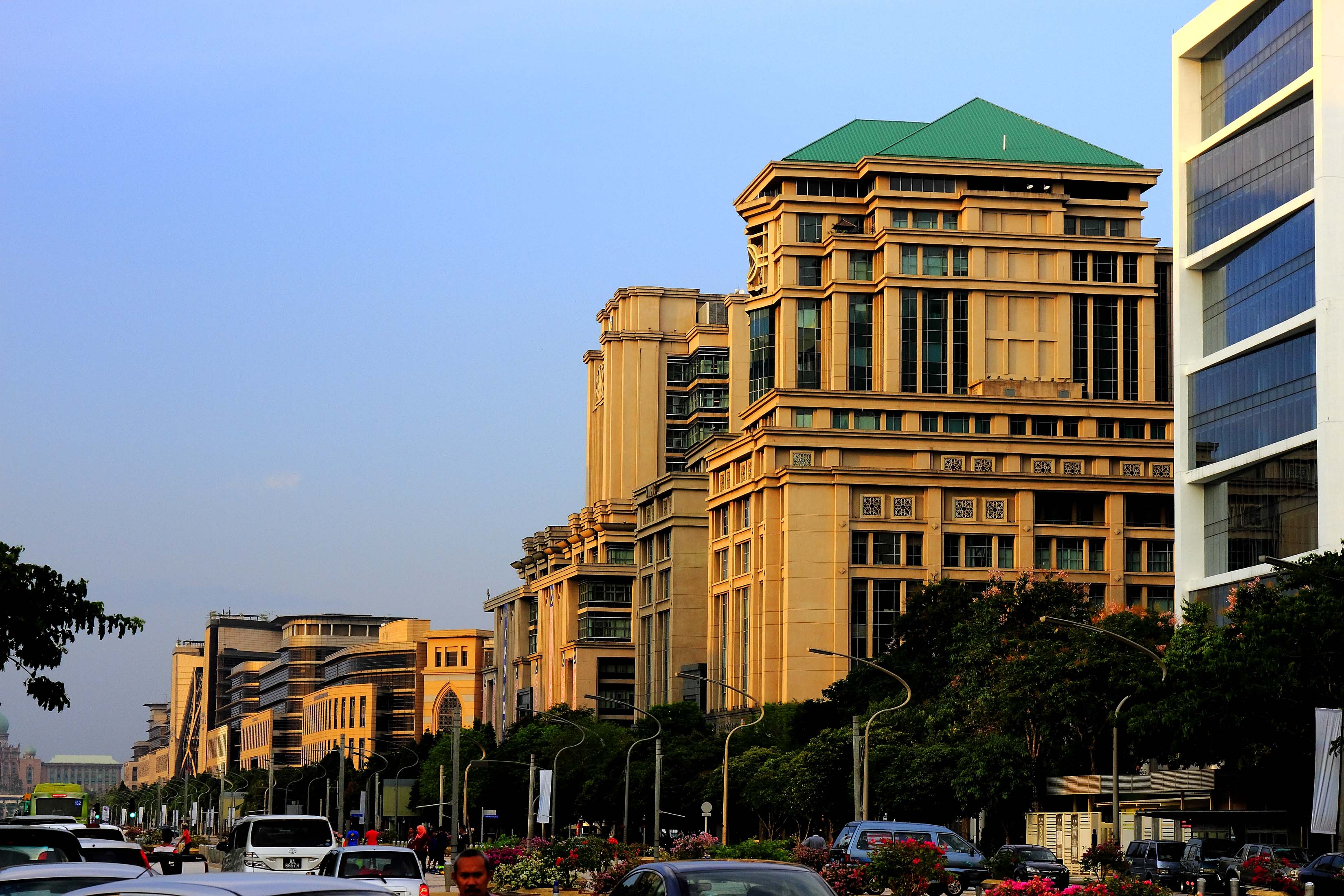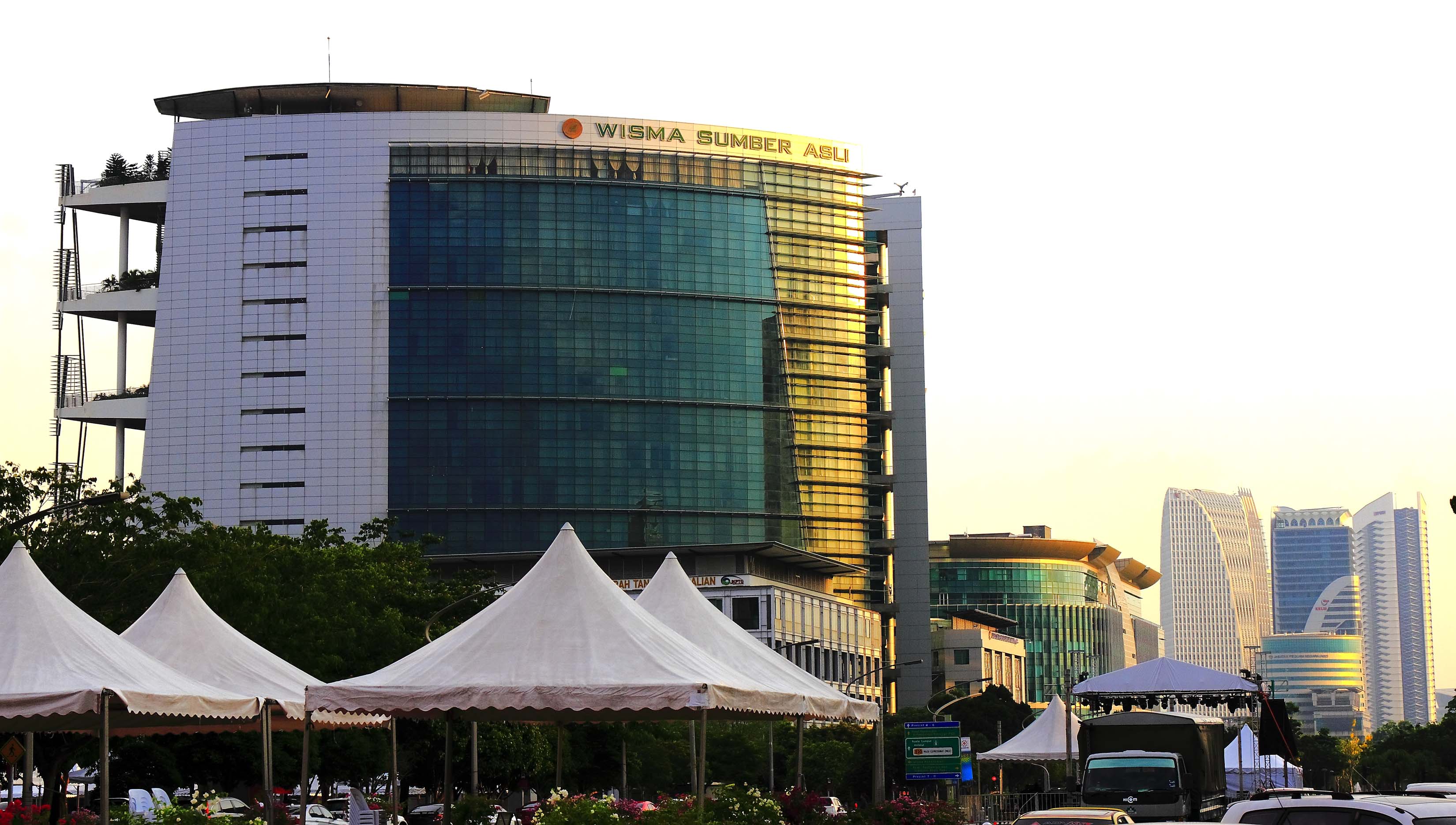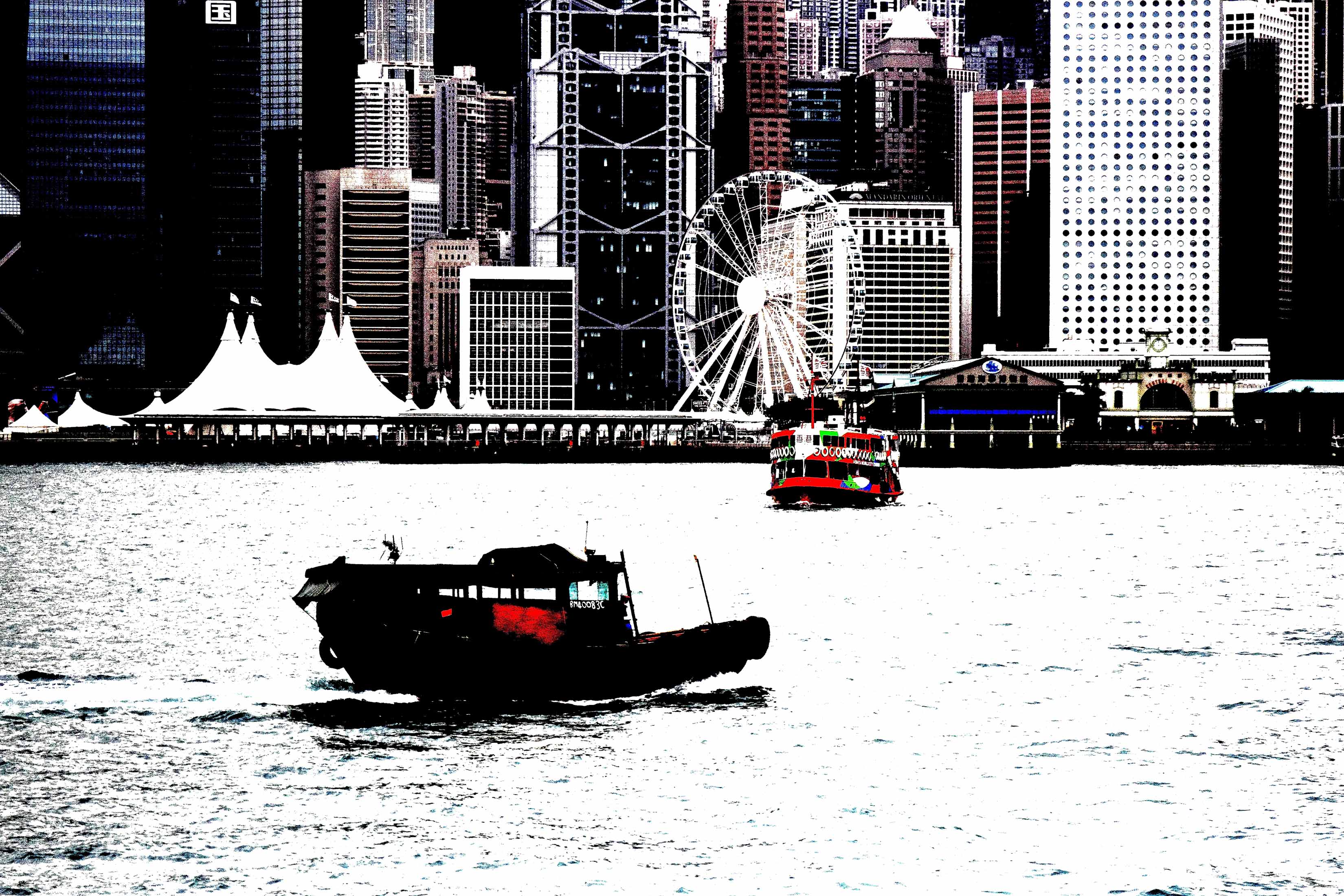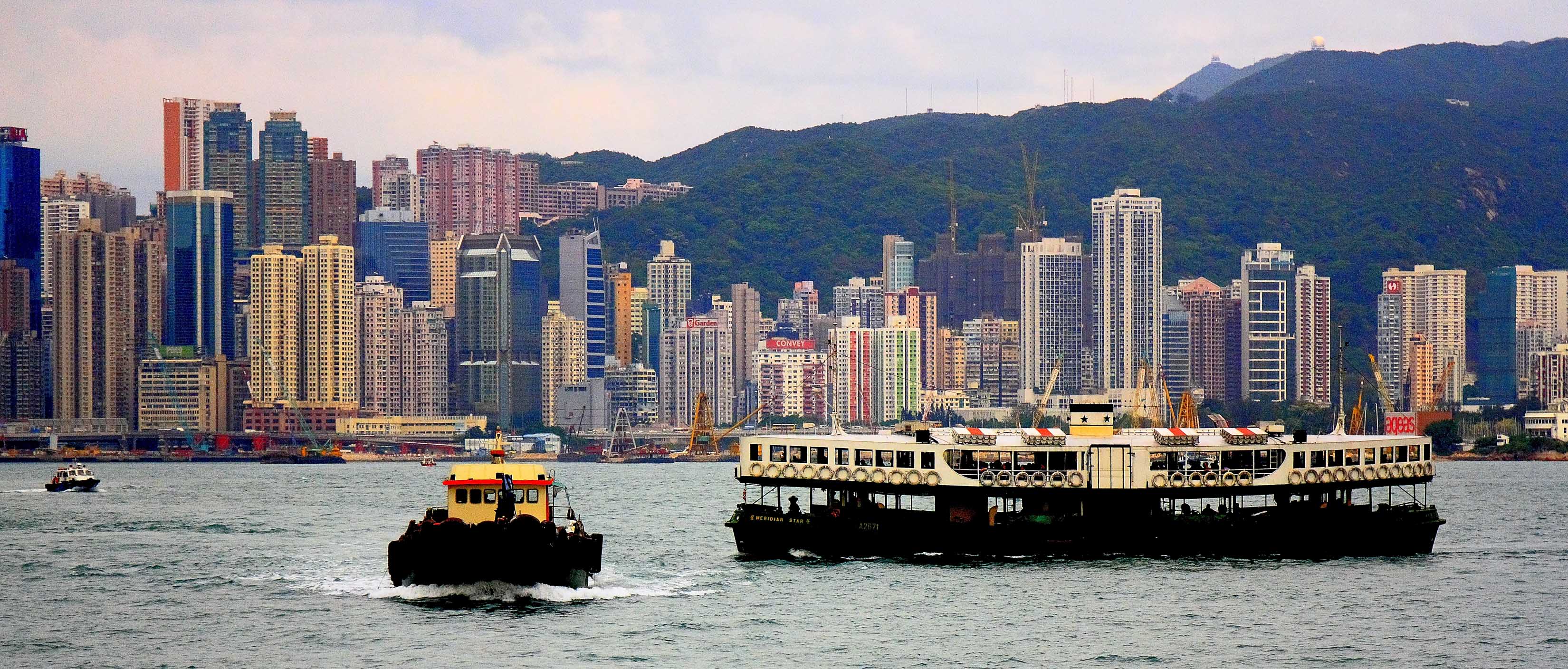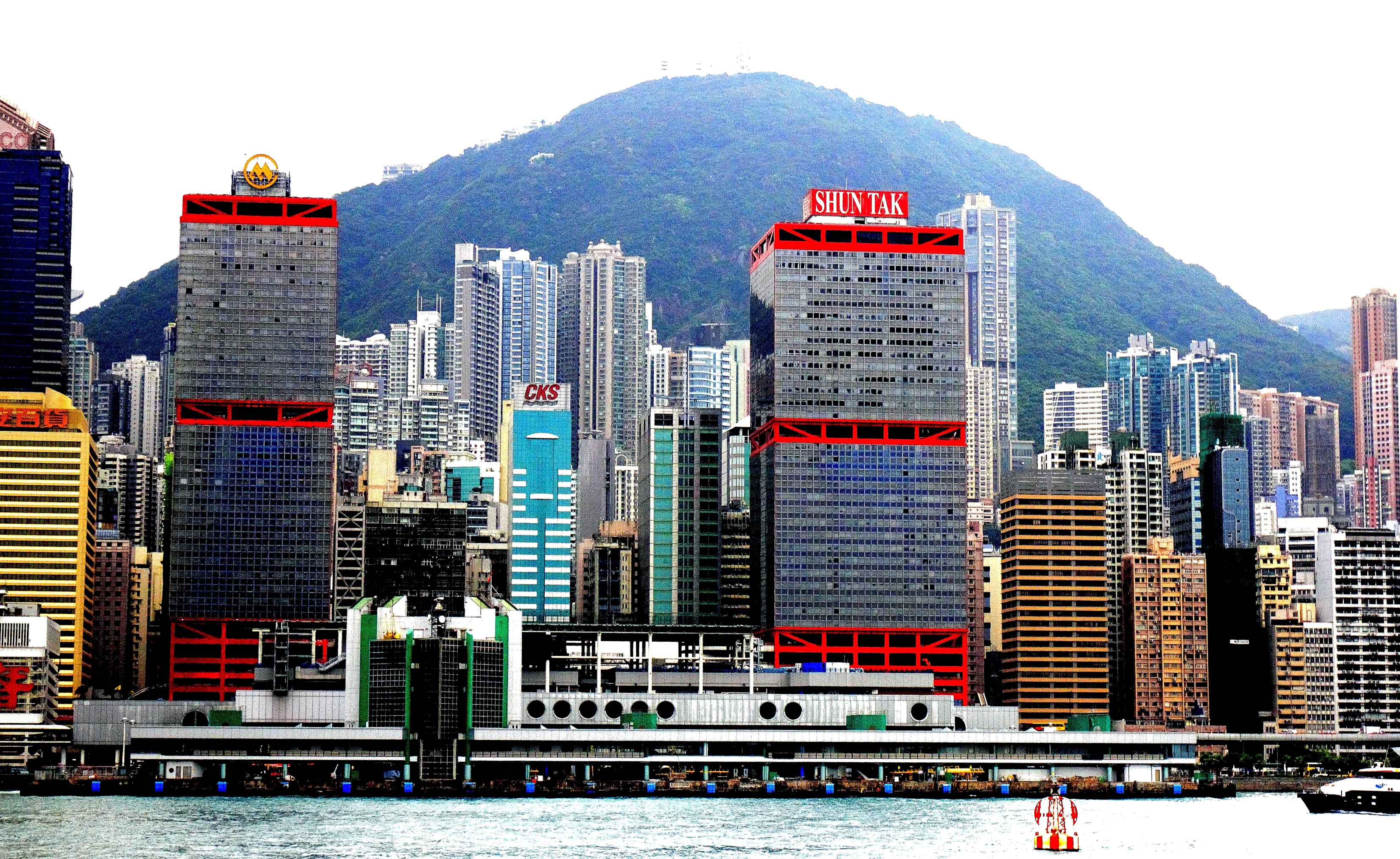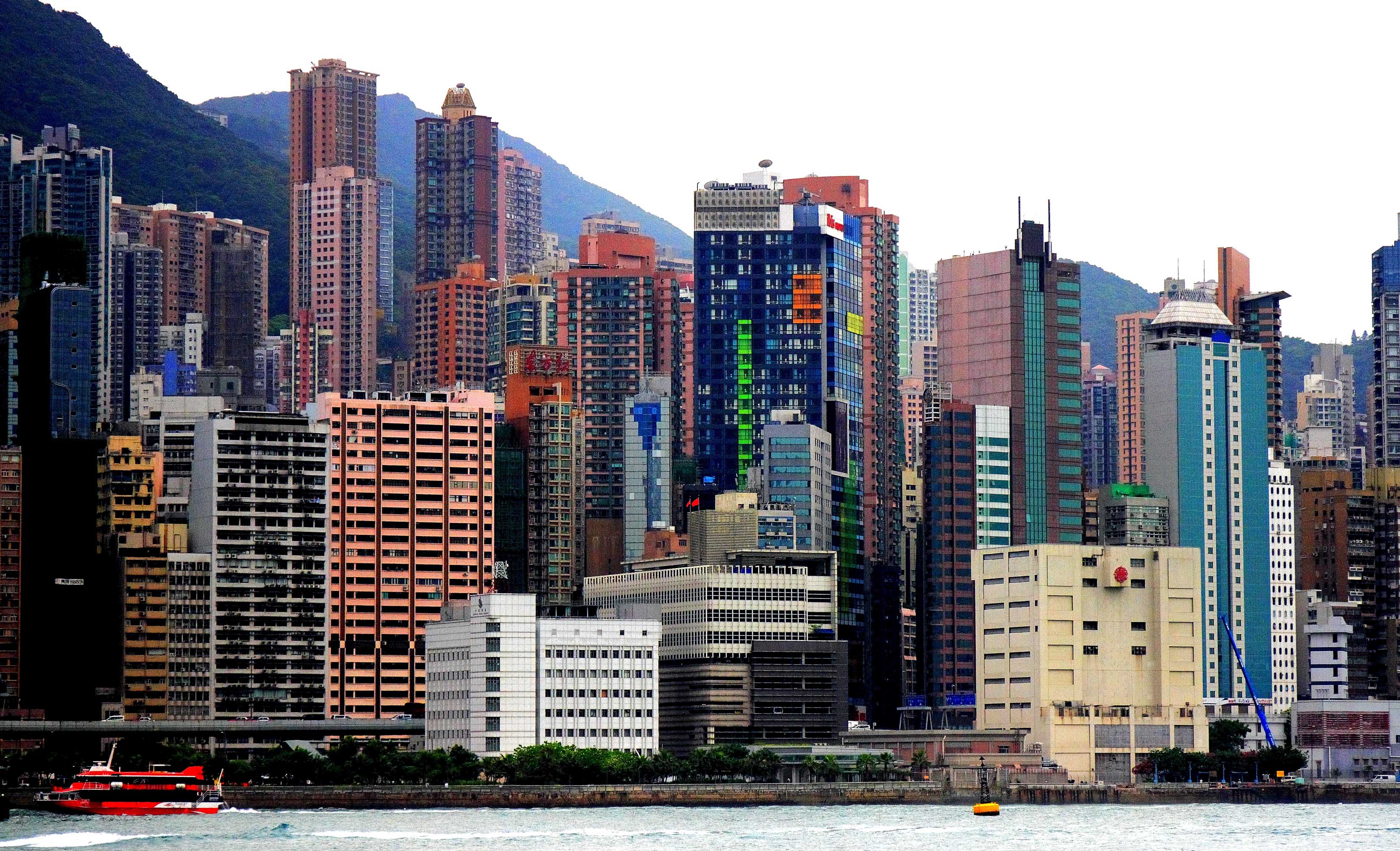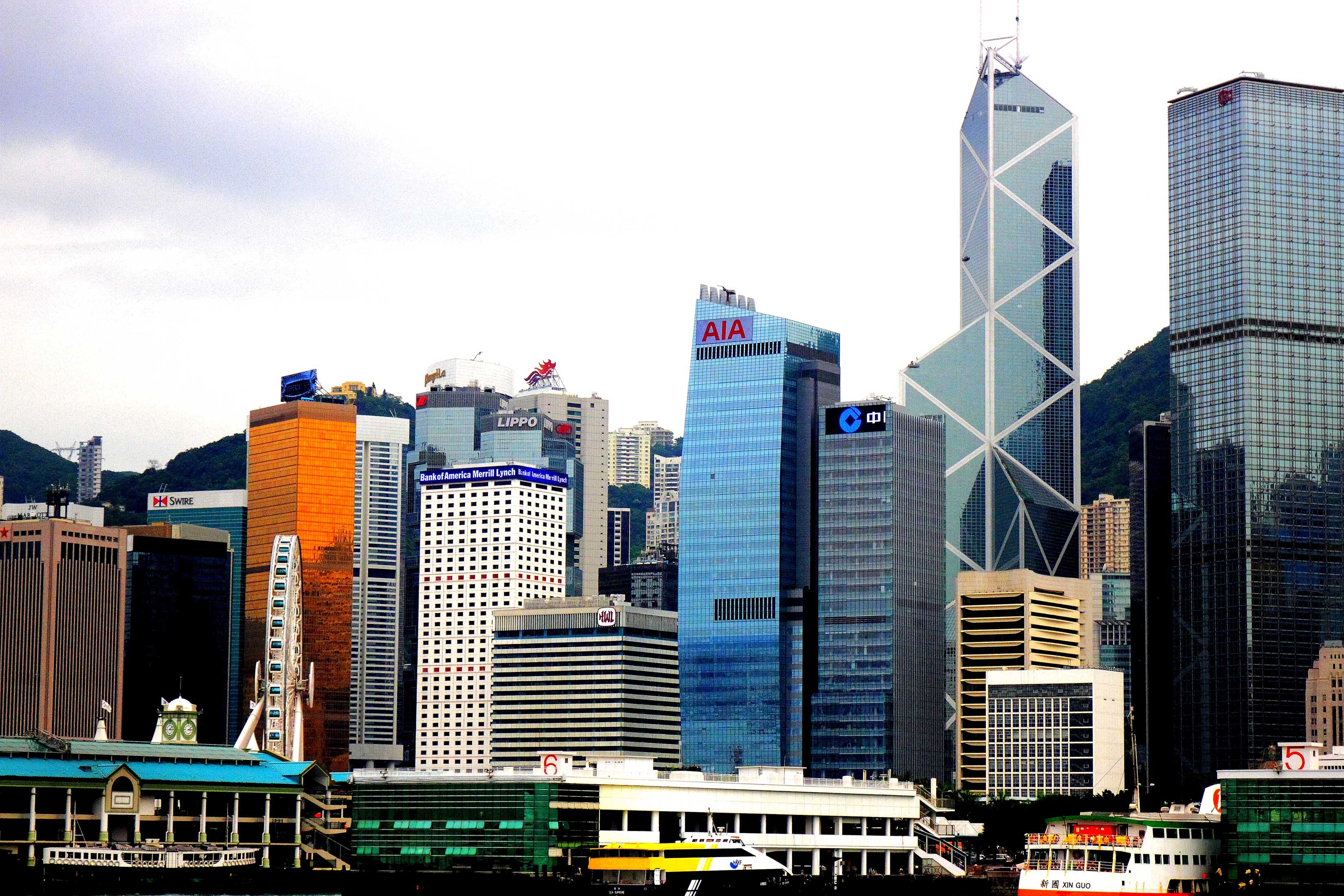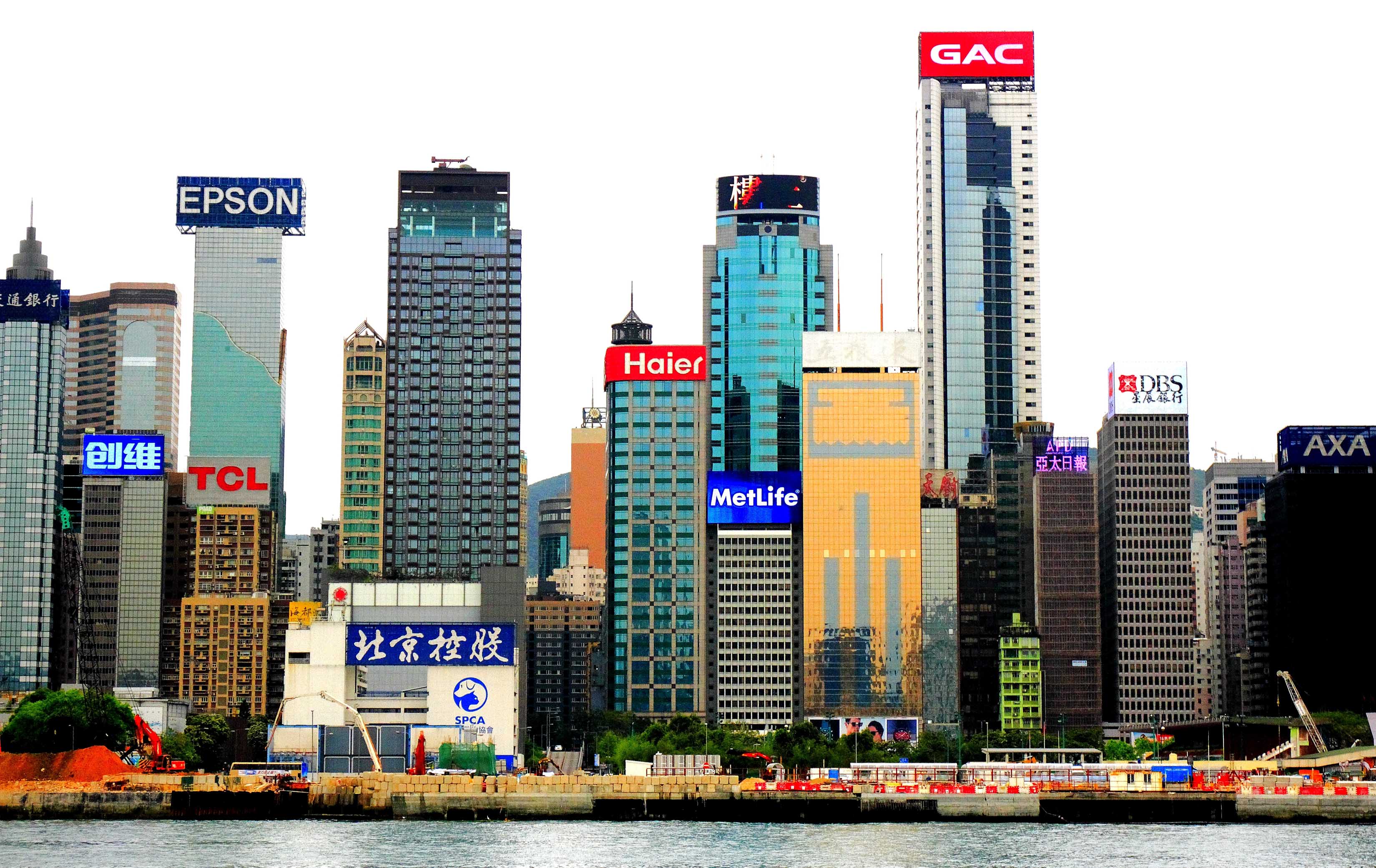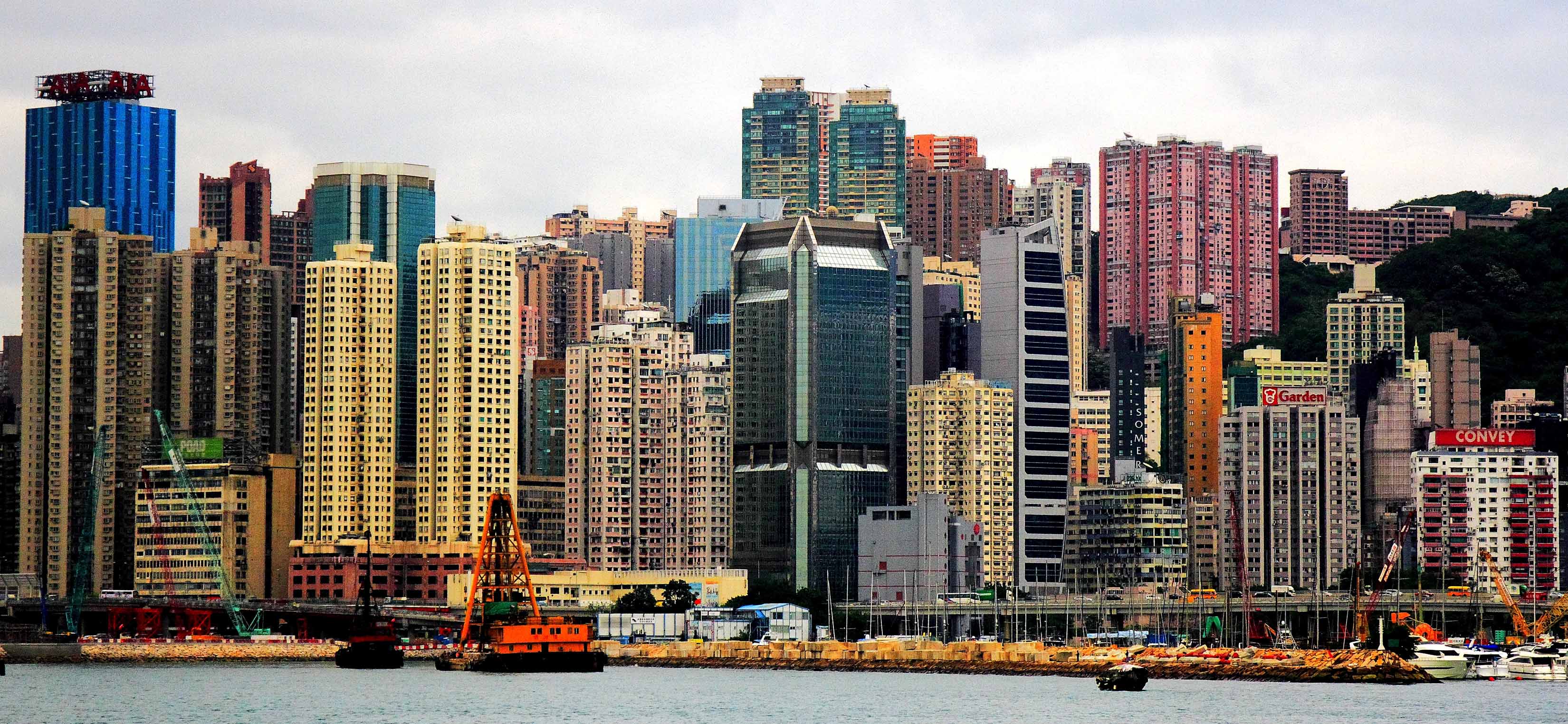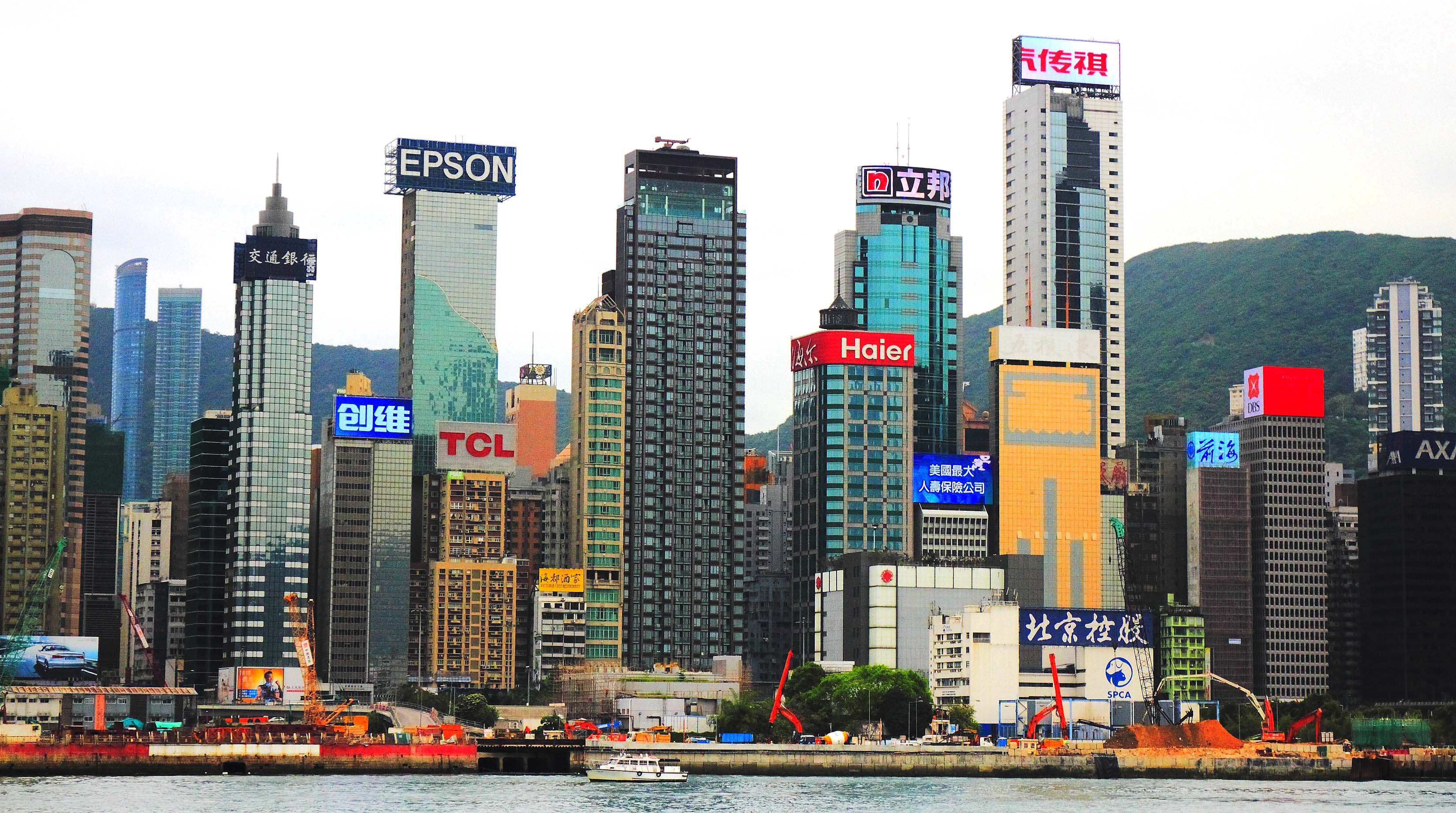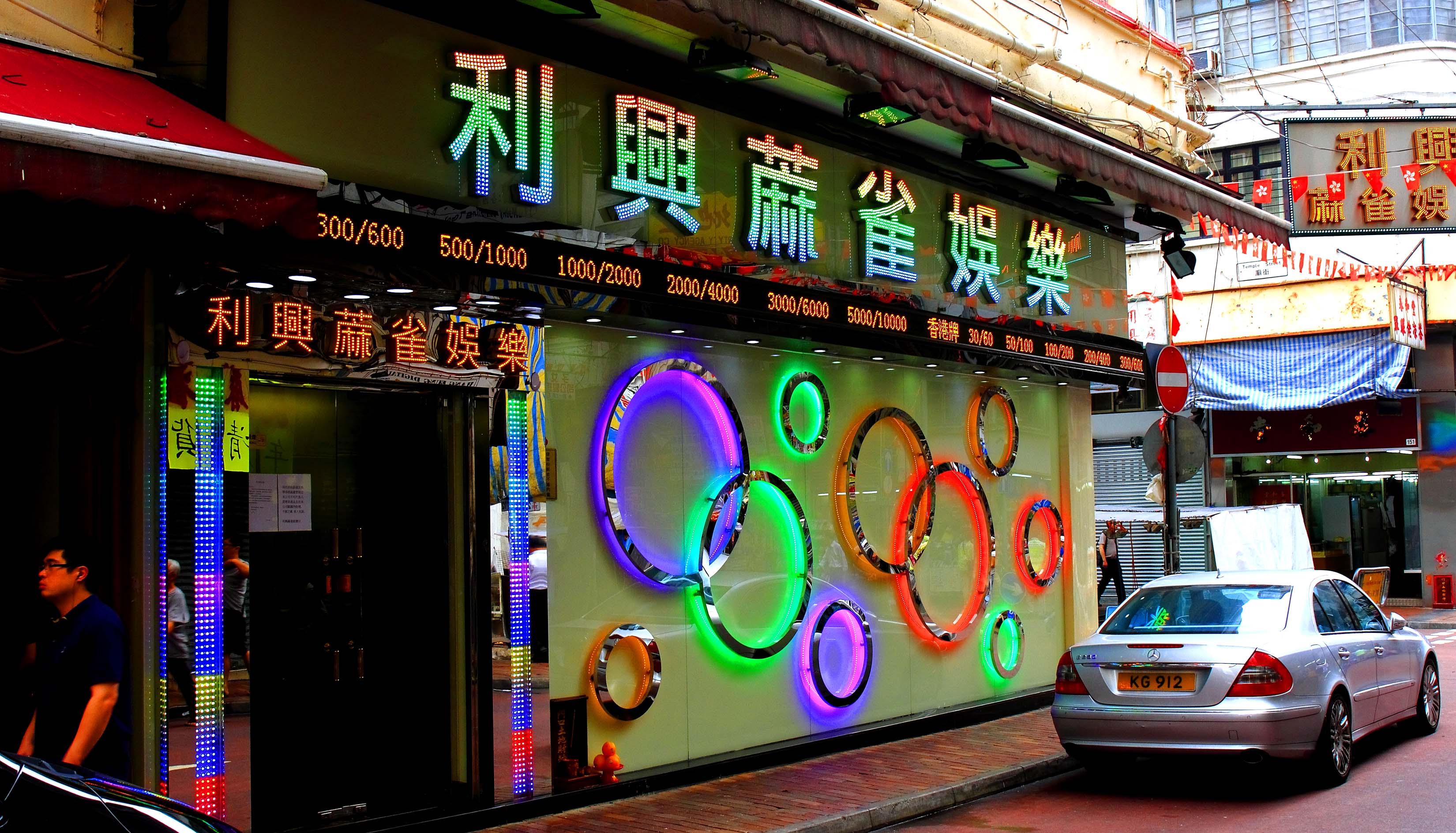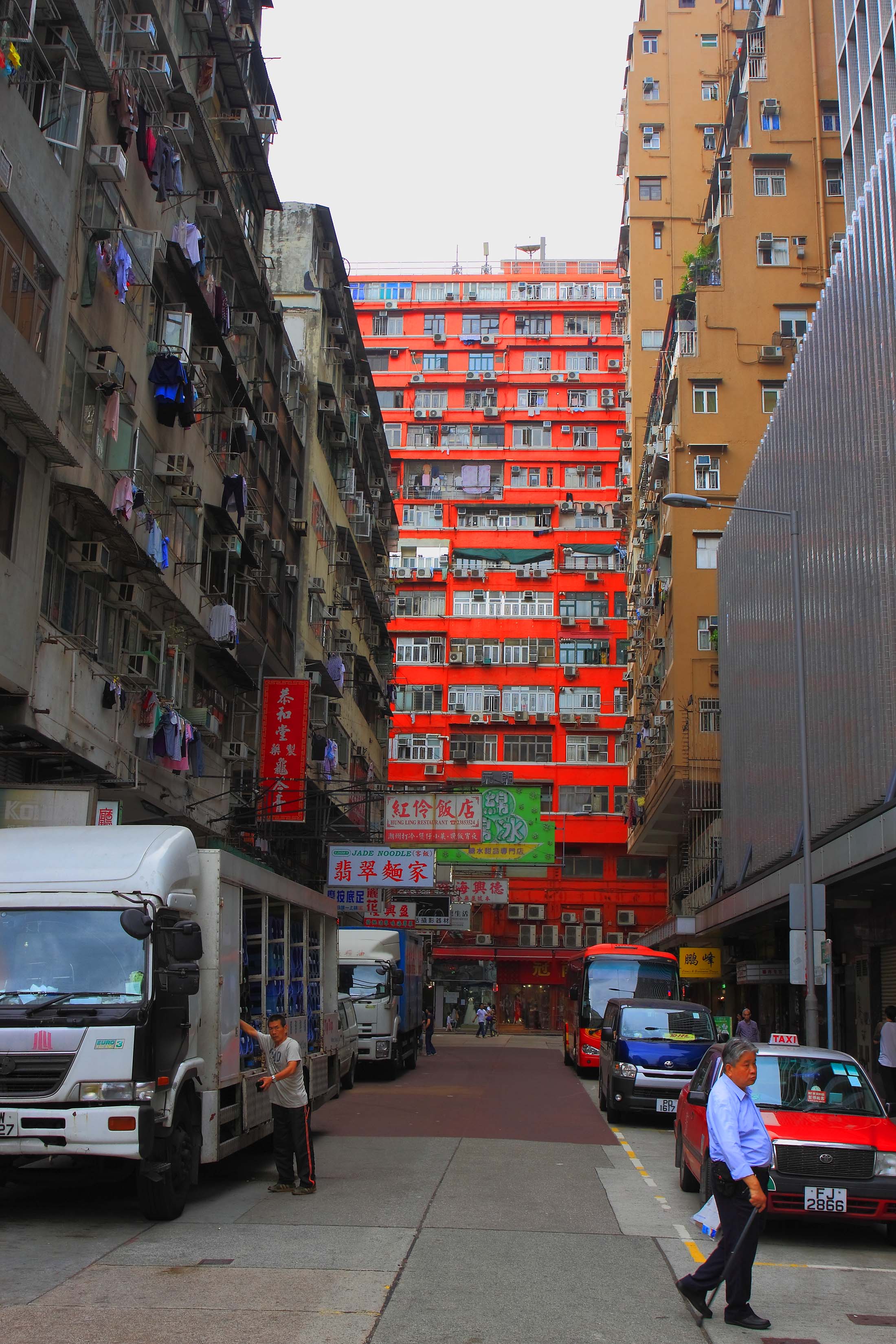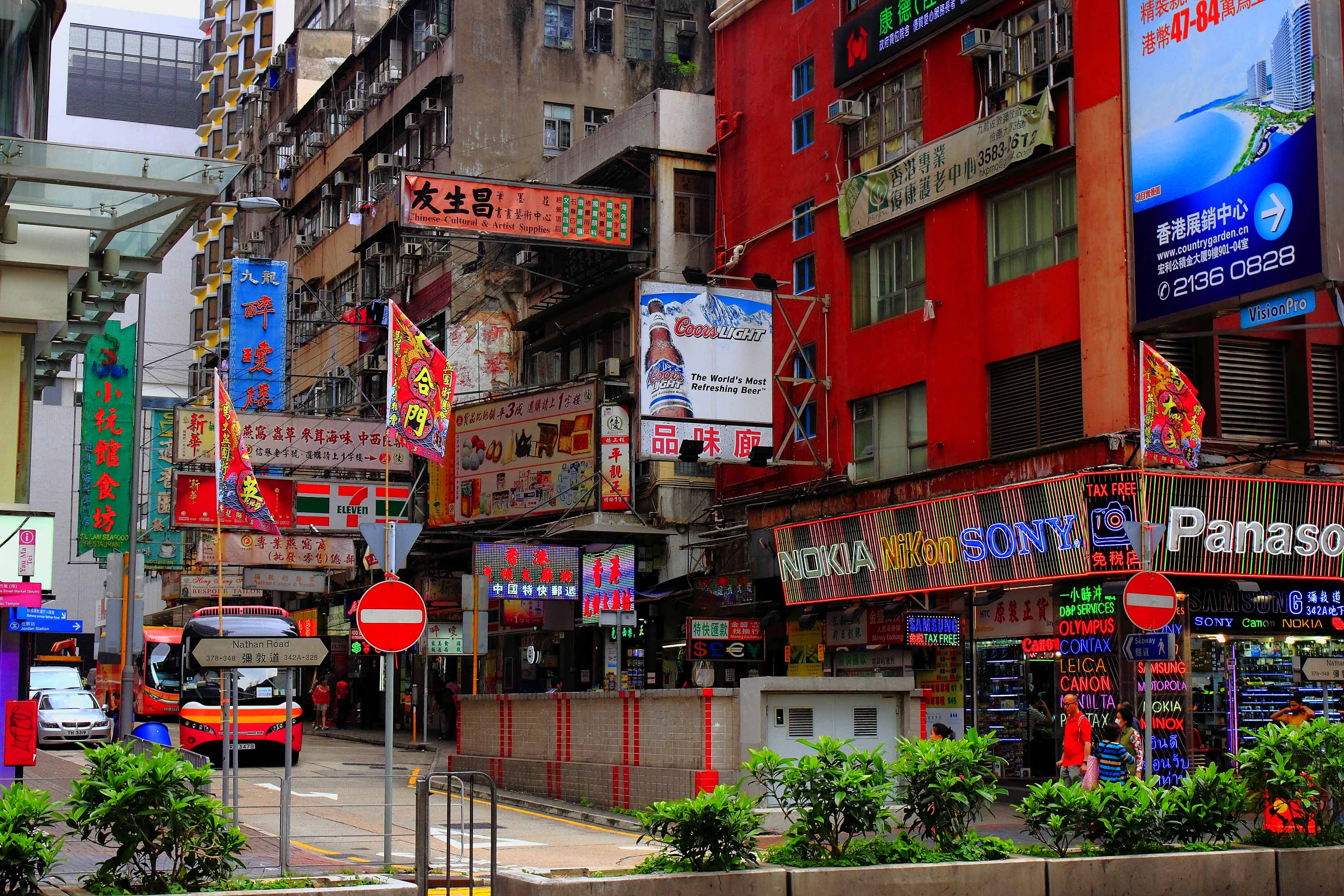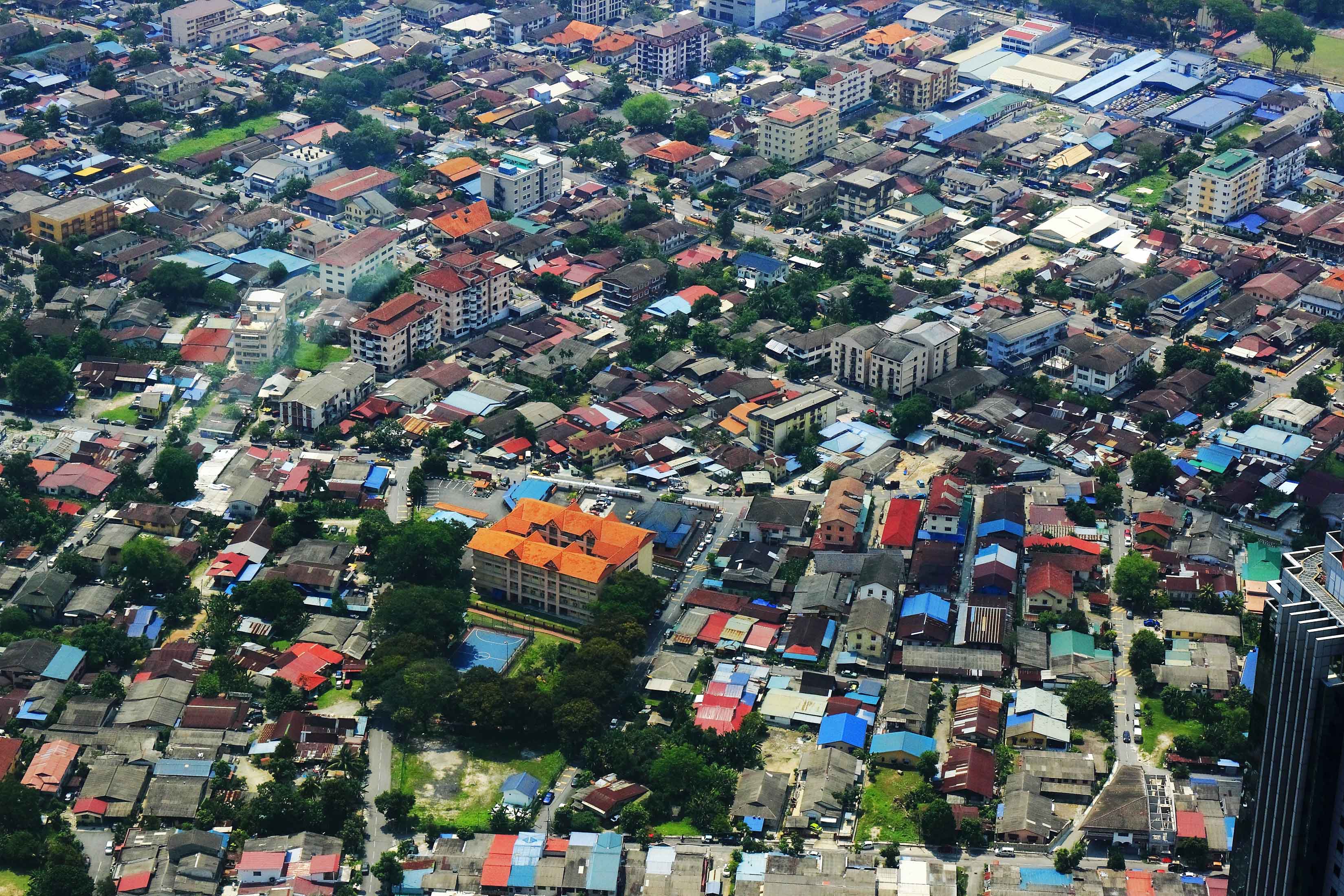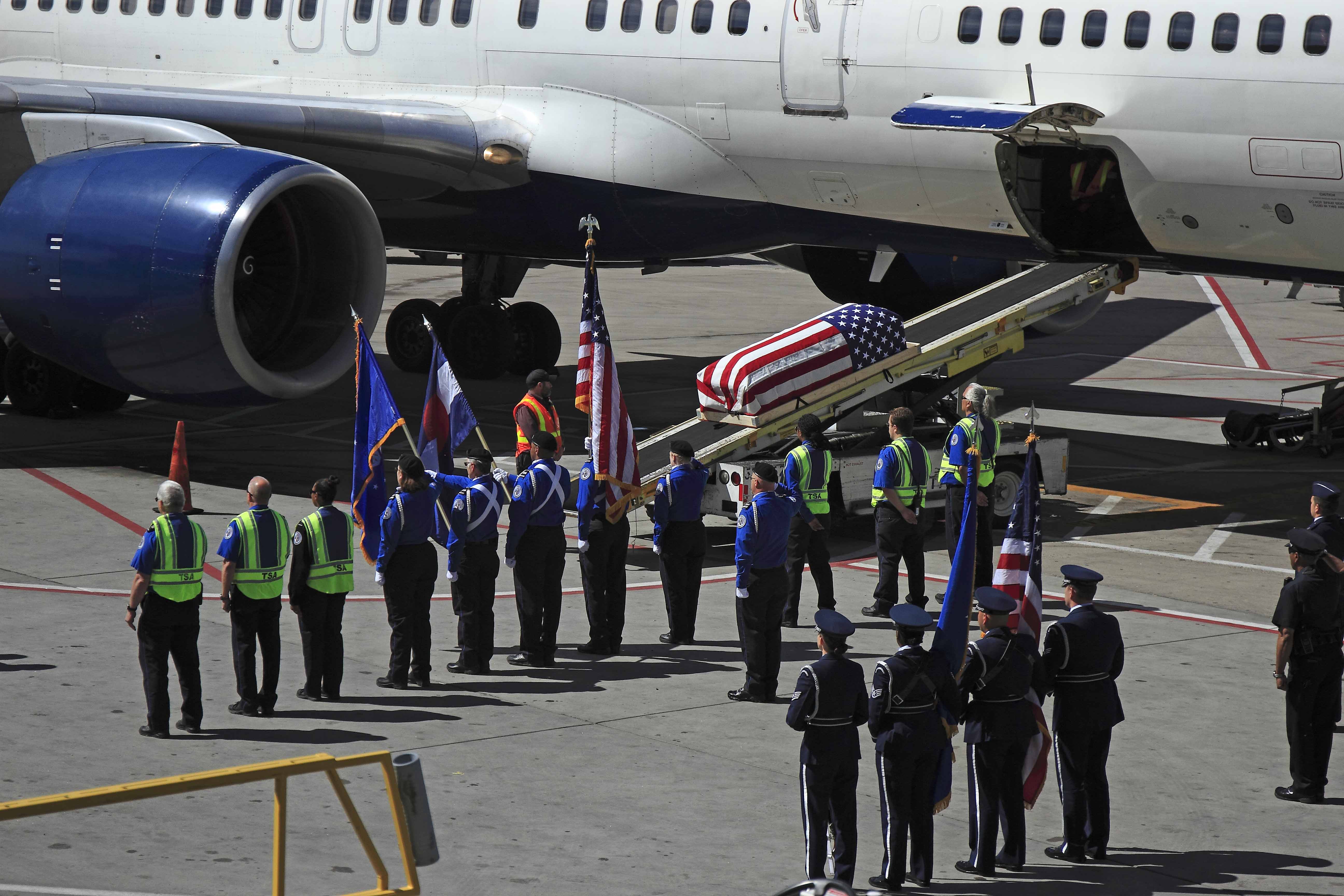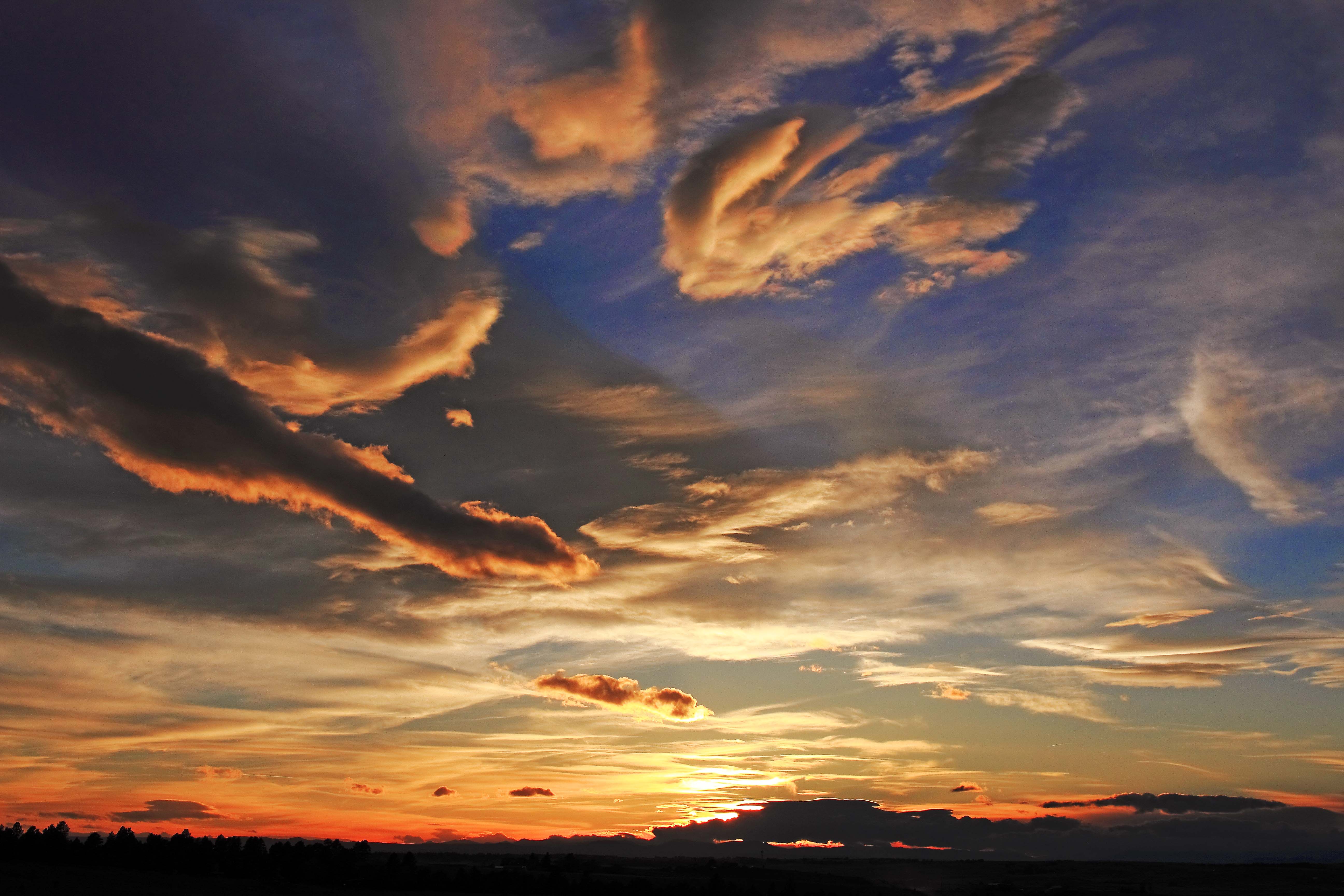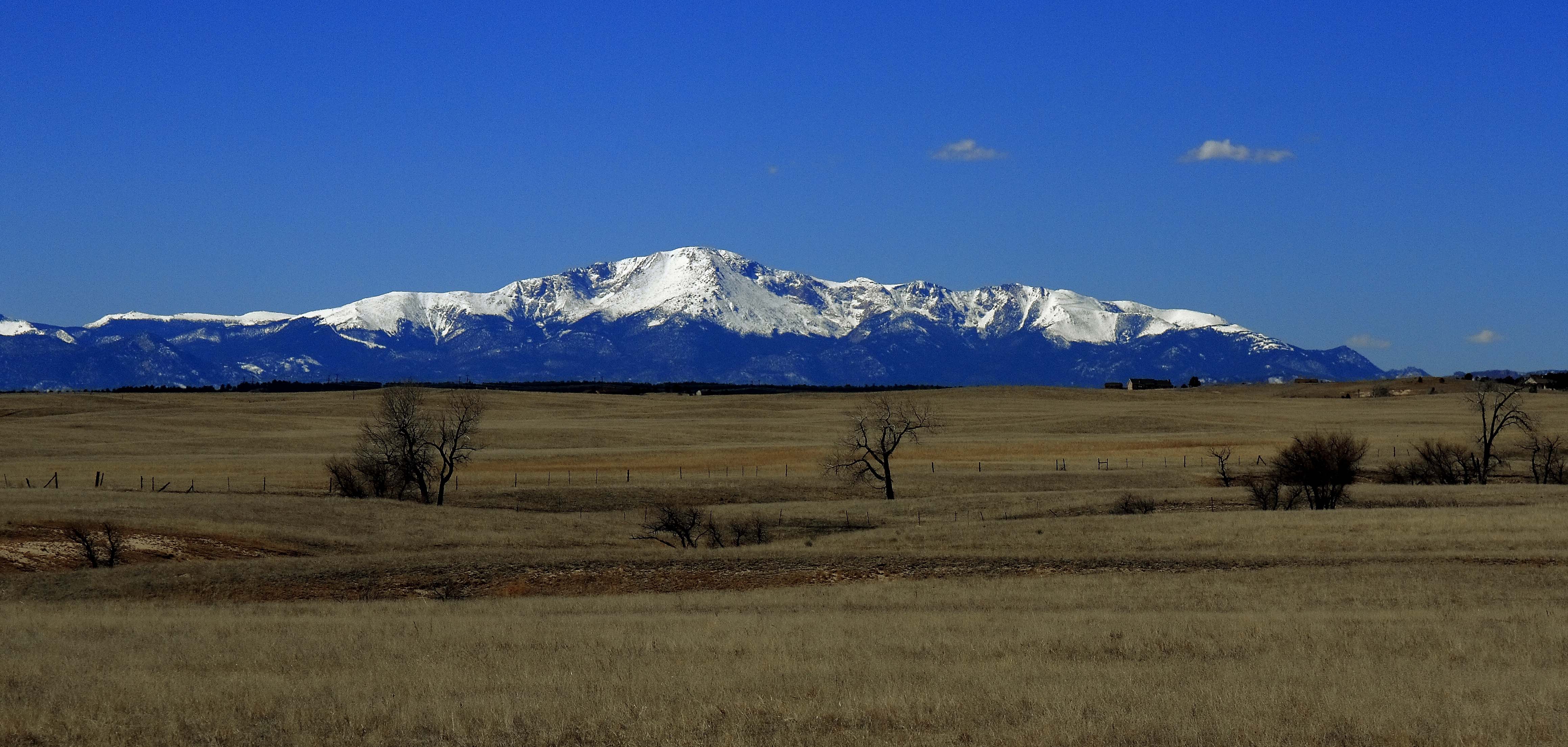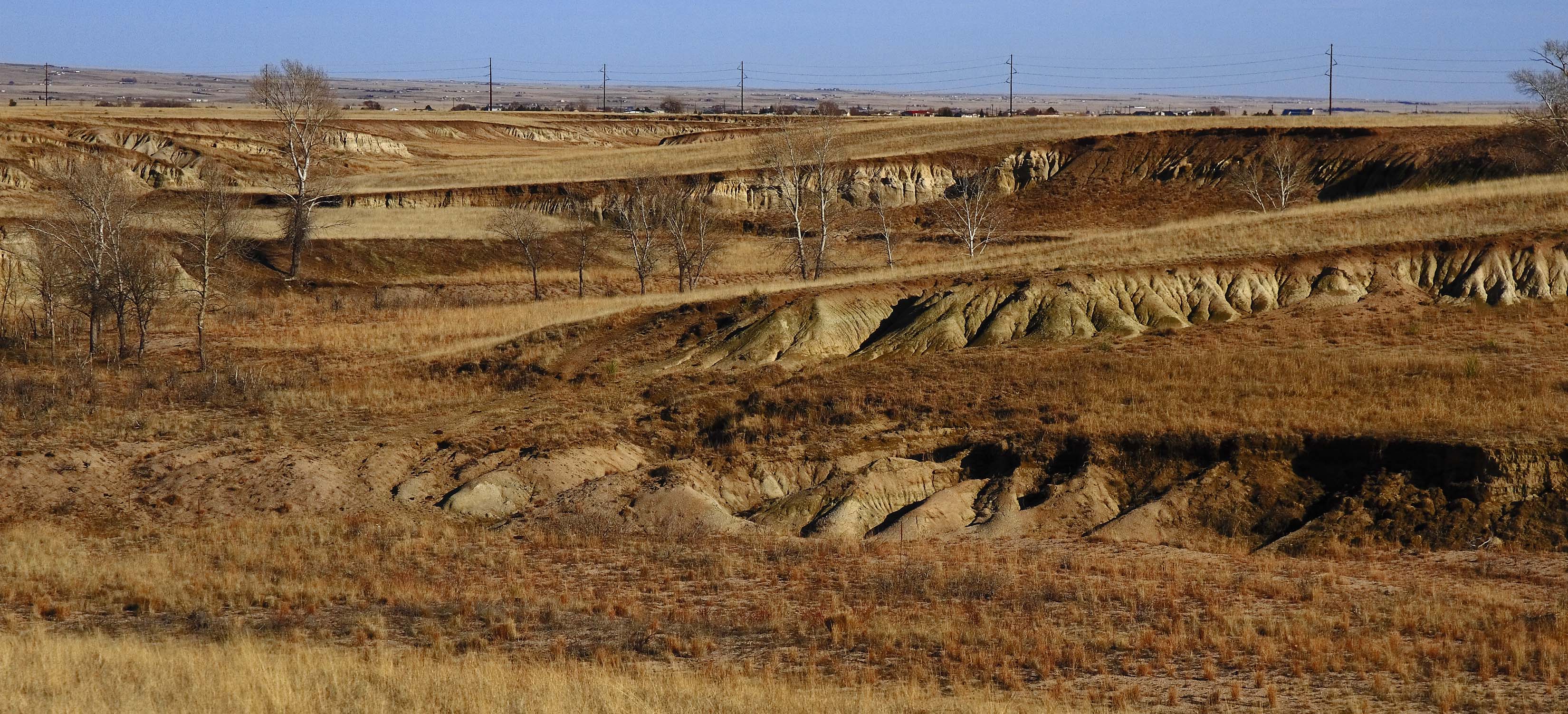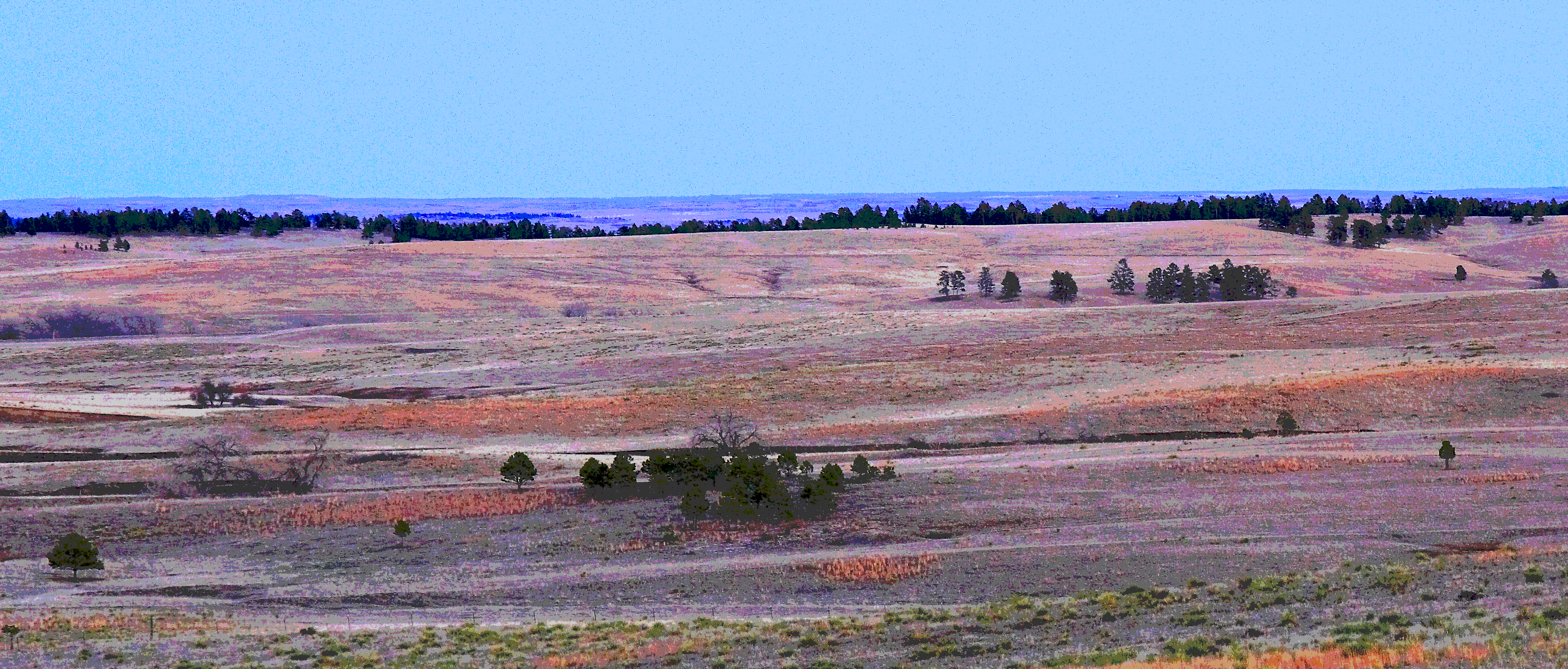Kestrel Falcon
nature today
Views from North Petronas Tower
The Tangled Clinton Web
dystopian distinction without a difference
“Hong Kong’s pursuit of democracy has entered a crucial stage. After almost 18 months of heated debate, the long-awaited reform package for the chief executive election in 2017 was finally unveiled yesterday. The details, unsurprisingly, dovetail with what Beijing had already decided last August. Imperfect as it is, the proposal is still a step forward.
The outlook, though, remains gloomy at this stage, despite efforts by the government to make the contest more competitive. As many as 10 hopefuls will be allowed to come forward for consideration by the future nominating committee under a threshold lower than the existing one for the chief executive race. But as mandated by Beijing, only two or three candidates who secure at least 50 per cent support from the committee at the second stage will advance to a popular vote.”
Sounds pretty much like Colorado’s caucus system, but the Chinese call it communism.
Victoria Harbour night
Putrajaya, Malaysia
Hong Kong Victoria Harbour
Soldier returned to Denver today
The arrival of the remains of a 1967 AF Academy graduate, Capt. Chorlins, who was shot down in 1970 in Laos. The funeral and burial are scheduled for 10AM today. It took at least 10 years to complete the DNA identification after recovery of his remains in 2003.
Academy grad killed in Vietnam

U.S. AIR FORCE ACADEMY, Colo. – An Air Force Academy graduate who went Missing In Action in Vietnam returns to his alma mater April 14 for a funeral service and burial.
Funeral services for Capt. Richard David Chorlins, Air Force Academy Class of 1967, are scheduled for 10 a.m. in the Cadet Chapel, followed by internment at the Air Force Academy cemetery.
Then-First Lieutenant Chorlins, was a pilot and an Air Commando, assigned to the 602nd Special Operations Squadron at Nakhon Phanom Royal Thai Air Force Base in Thailand. On Jan. 11, 1970, his A-1H Skyraider was struck by 37mm anti-aircraft artillery fire and crashed into the side of a mountain during a night interdiction mission over the Ho Chi Minh Trail in Laos. No parachute was observed and there were no other indications that he had survived. Two days later, when evidence of his death was received, his status was changed from missing in action to killed in action. On Jan. 14, 1970, he was posthumously promoted to the grade of Captain.
His remains were not returned until 2003, and it took another decade for DNA testing to positively identify the remains.
Chorlins was a native of University City, Mo. He was an exceptional cadet and named to the Superintendent’s List for five semesters. He majored in Economics and followed his Academy career by obtaining a Master’s Degree in Economics at Georgetown University. He was interested in returning to the Academy as a faculty instructor after the war.
Captain Chorlins is honored in several places. His name appears on the Vietnam Memorial Wall in Washington D.C., on Panel 14W, line 25. He is also recognized on the Academy’s War Memorial, located near the flagpole on the Terrazzo in the Cadet Area. In addition, the Reflections Gallery in the Missouri History Museum in St. Louis has a display devoted to Captain Chorlins.
The funeral was preceded by a dignified arrival ceremony on April 13. Chorlins’ remains will return to Colorado aboard Delta Flight 1382, and members of the Air Force Academy will be present to honor this fallen warrior on his return to the Academy.
http://commons.wikimedia.org/wiki/A-1_Skyraider#/media/File:A-1H_602SOS_Jun1970.jpg
“the central planner’s fatal conceit”

California’s drought provides a useful lesson.
I am glad California is having a drought. Not because I hate California (I love California) or Californians (I hate them only a little, for what they’ve done to California) or Central Valley farmers (some of my best friends . . .) or even Governor Jerry Brown, droll disco-era anachronism that he is, but because the episode presents an excellent illustration of the one fundamental social reality that cannot be legislated away or buried under an avalanche of government-accounting shenanigans and loan guarantees or brought to heel by politicians no matter how hard the ladies and gentlemen in Sacramento and Washington stamp their little feet: scarcity.
California has X amount of water at its disposal, and it has politicians in charge of overseeing how it gets divvied up. Which politicians? The same ones responsible for the current sorry state of California’s water infrastructure, of course.
Should be a hoot.
The main claimants are these:
 Farmers, who by some estimates consume about 80 percent of the water used in California. Agriculture is a relatively small component of California’s large and diverse economy, but California nonetheless accounts for a large share of the nation’s agricultural output. Both of those things are, in a sense, the good news: If market-rate water costs were imposed on California farms, as they should be, then any higher costs could be passed along — not only to consumers, but up and down the supply chain — in a very large global market, where they should be digested more easily.
Farmers, who by some estimates consume about 80 percent of the water used in California. Agriculture is a relatively small component of California’s large and diverse economy, but California nonetheless accounts for a large share of the nation’s agricultural output. Both of those things are, in a sense, the good news: If market-rate water costs were imposed on California farms, as they should be, then any higher costs could be passed along — not only to consumers, but up and down the supply chain — in a very large global market, where they should be digested more easily.
 People with lawns, including people with the very large and complex lawns known as golf courses, who account for an extraordinary amount of California’s non-agricultural water use. In arid Southern California, and especially in the golf-loving desert resort communities of the Coachella Valley, keeping the grass green often accounts for more than half — and sometimes much more than half — of residential water use. How thirsty is grass? Consider that 200 square feet of California swimming pool uses less water over the course of three years than does 200 square feet of California lawn. (Yes, I know: volume versus surface area, but the math still works out.) And about half of the water used on lawns is lost to the wind, because sprinkler systems spray water in the air rather than on the grass.
People with lawns, including people with the very large and complex lawns known as golf courses, who account for an extraordinary amount of California’s non-agricultural water use. In arid Southern California, and especially in the golf-loving desert resort communities of the Coachella Valley, keeping the grass green often accounts for more than half — and sometimes much more than half — of residential water use. How thirsty is grass? Consider that 200 square feet of California swimming pool uses less water over the course of three years than does 200 square feet of California lawn. (Yes, I know: volume versus surface area, but the math still works out.) And about half of the water used on lawns is lost to the wind, because sprinkler systems spray water in the air rather than on the grass.
 The goddamned delta smelt, a.k.a. “the world’s most useless fish,” whose comfort and happiness demanded the dumping of some 300 billion gallons of fresh water into the San Francisco Bay — and thence into the Pacific Ocean — in 2009 and 2010. That’s enough fresh water to cover the state of New Jersey nearly three inches deep. The smelt’s delicious friend, the salmon, is a co-claimant.
The goddamned delta smelt, a.k.a. “the world’s most useless fish,” whose comfort and happiness demanded the dumping of some 300 billion gallons of fresh water into the San Francisco Bay — and thence into the Pacific Ocean — in 2009 and 2010. That’s enough fresh water to cover the state of New Jersey nearly three inches deep. The smelt’s delicious friend, the salmon, is a co-claimant.
 Everybody else.
Everybody else.
Governor Brown’s response is a textbook example of the central planner’s fatal conceit. He issued an executive order imposing 25 percent cuts on the state’s 400 local water agencies, which supply about 90 percent of Californians’ water but do not supply the farms that consume most of the state’s water. That 25 percent figure looks bold and authoritative, but when was the last time you saw the production, consumption, or price of a scarce commodity in the real world move by such neat increments? When something disturbs the equilibrium of the world’s oil markets — which happens every single day — then the markets make minuscule, complex adjustments, and continue to make them around the clock — the markets never sleep — with producers and consumers both modifying their behaviors to accommodate the new economic realities as they emerge. Amazingly (but not amazingly), this happens with no Governor Brown in charge of the process. You’ve never seen the price of pork bellies or soybeans simply jump 25 percent and stay there indefinitely, or rice or wheat consumption fall by neat round numbers. But Governor Brown imagines that he can rationally manage by fiat the consumption of the most important commodity in the world’s seventh-largest economy.
Good luck with that.
Governor Brown’s solution/non-solution has been criticized for failing to impose serious new restrictions on farmers. There are several reasons for this: First, Governor Brown probably does not want to reinforce the impression that his administration is an instantiation of insular coastal soy-latte progressivism staffed by feckless urbanites of the sort who believe that grapes come from Trader Joe’s and who are therefore willing to see the state’s rural interior gutted; second, and to give a decent if often foolish man proper credit, Governor Brown probably is not much inclined to impose heavy new burdens on the state’s relatively poor and downwardly mobile agricultural corridor, and to see large numbers of the poorest Californians thrown out of work; third, farmers already have seen their water allowances docked.
RELATED: The Anti-Empirical Left
Among tragedies of the commons, California’s water situation is Hamlet, a monumental work fascinating for all of the possibilities it raises and not given to easy resolution. But even given the underlying complications, from the hydrological to the legal (California’s system of water rights is remarkably complex), the fundamental problem is that nobody knows what a gallon of water in California costs. Water allocations are made mainly through politics rather than through markets, with the state’s legal regime explicitly privileging some water uses over others.
There are two possible ways to allocate water in California: The people in Sacramento, Governor Brown prominent among them, can pick and choose who gets what, with all of the political shenanigans, cronyism, inefficiency, and corruption that brings. Or Californians can get their water the same way they get most everything else they need and value: by buying it on the open market. This is an excellent opportunity to apply the cap-and-trade model that many progressives favor when it comes to carbon dioxide emissions, with an important difference: This deals with real, physical scarcity, not artificial scarcity created by regulation.
(Incidentally, it here bears repeating that notwithstanding the inaccurate proclamations of Governor Brown and President Obama, California’s drought almost certainly is not the result of global warming; the climate models supporting the scientific consensus on global warming predict wetter winters for California, not the drier winters that have produced the current crisis. California’s climate is complex, but a great deal of it is dominated by desert and arid to semi-arid Mediterranean conditions.)
RELATED: Climate Alarmists Warm it Up
As the economist Alex Tabarrok puts it: “California has plenty of water — just not enough to satisfy every possible use of water that people can imagine when the price is close to zero.” As noted, the water-rights picture is complicated, but it is not so complicated that California could not 1) calculate how much water is available for consumption; 2) subtract preexisting claims; 3) auction off the remainder, with holders of preexisting water rights allowed to enter that market and trade their claims for money. A gallon of water used to green up a lawn in Burbank and a gallon of water used to maintain a golf course in Palm Springs and a gallon of water used to irrigate almonds in Chico would be — and should be — on exactly the same economic and political footing.
As Professor Tabarrok notes, San Diego residents use about twice as much water per capita as do residents of Sydney, a city whose climate is comparably arid and whose residents are comparably well-off, a situation that is almost certainly related to the fact that San Diegans pay about one half of a cent per gallon for household water.
Governor Brown wants to be the man who decides what is and is not a good use of California’s water; in defending his decision not to impose further restrictions on farmers, he said: “They’re not watering their lawn or taking long showers. They’re providing most of the fruits and vegetables of America and a significant part of the world.” That is no doubt true. But the only way to discover what that is really worth — not in sentimental, good-enough-for-government-work terms, but in cold-eyed dollar terms — is to allow real prices for water to emerge. My own suspicion is that California’s almonds and avocados will remain in high demand when the water used in their cultivation is properly priced on an open market.
Relatively small gains in the efficiency of agricultural irrigation would go a long way toward helping California live with the water it has. So would converting a few million suburban lawns to desert landscaping. So would ceasing to dedicate large amounts of fresh water to political projects of dubious value.
Which to choose? Before that question can be answered, there is the prior question: “How to choose who chooses?” The rational answer is that water consumers should choose how water gets used, provided that each of them pays the real price for his choices.
California’s largest crop is grass — by which I do not mean marijuana, but lawns. Until the day comes when a ton of fresh-cut grass fetches a higher price than a ton of avocados, my guess is that California’s farmers will do fine under a market-based water regime. But maybe not. Everyone has his own favorite drought bugaboo: suburban lawns, almond farms, the delta smelt, golf courses, illegal marijuana cultivation, etc. Given enough time, somebody will figure out a way to blame this all on the Koch brothers, illegal immigrants, or the Federal Reserve. But the fact is that nobody knows — nobody can know — what the best use of any given gallon of water in California is. Californians can put their money where their parched mouths are, or they can let Governor Brown play Ceres-on-the-Bay, deciding which crops grow and which do not.
Whether the commodity is water or education or health care, if you care about something, put a price tag on it. You can’t afford for it to be cheap, and you sure as hell can’t afford for it to be free.
— Kevin D. Williamson is roving correspondent for National Review.
good light this morning
Stop the Left
No Leftist agenda item fairly depicts objective truth. Each element must be pasteurized through a propaganda filter to expose the kernels of reality at the bottom of their high stakes political movements.
Yet their sad tales read with an eerie similarity – powered vs. non-powered – them vs. us – oppressors around every corner, under every rock. The script always ends the same – more law, more special rights, more redistribution, more government, less freedom. And the Left always end up running the inevitable bureaucracy they install to administer the inequity of the hour.
Government is the only tool for the practicing Leftist. Every problem is political. Every solution is governmental. It matters not to a Leftist whether government is capable of solving a given problem. To the dedicated Leftist, government never has an incapacity.
Leftism is a jobs program for Leftists. Leftists make jobs out of thin air on the Orwellian excuse that regulation protects freedom. The only freedom that regulation protects is the power of bureaucrats to impose capricious law upon the rest of society.
Leftists have used the power of the state to hollow out the thinning carcass of productive America. What they haven’t prevented, they’ve taxed. What they haven’t taxed, they’ve oppressed.
No limits exist to what Leftists will say or do to crush those who stand in their way. They don’t intend to compromise, to get along with any non-Leftists, or to coexist. They intend to rule unscrupulously because they know better.
It’s past time the rest of humanity figured this out and quit accepting the Leftist paradigm, Leftist constructs, Leftist labels, Leftist causes, Leftist solutions, and Leftists.
The Left haven’t solved, improved, created, economized, alleviated, mitigated, simplified, remedied, or cured, anything.
The problems Leftists fantasize about aren’t real, and their prescriptions are just as phony.














